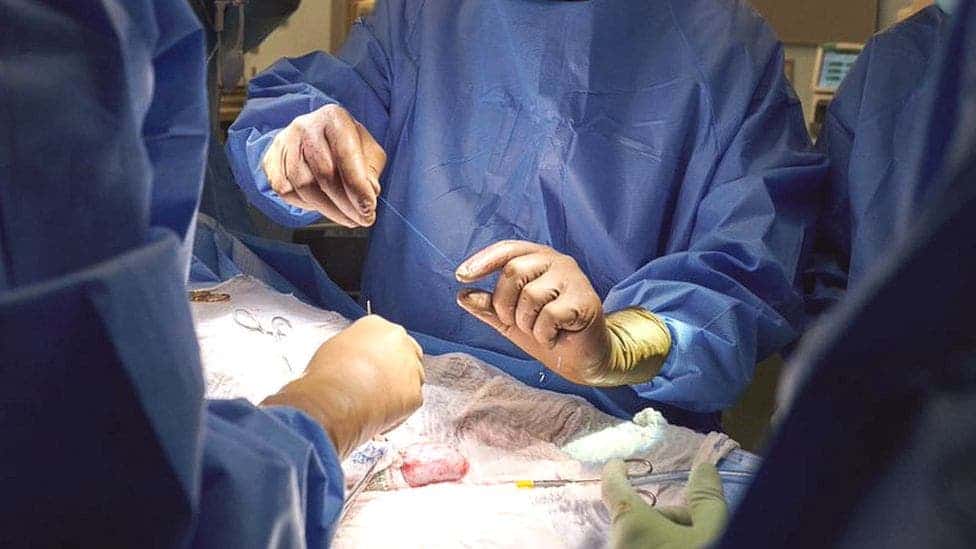
In a world first, medical researchers have attached a pig’s kidney to the body of a brain-dead human. The kidney was kept attached outside the body through large blood vessels and did its job as expected, filtering and producing urine. The body did not reject the foreign organ despite it belonging to another species, marking a huge step forward in achieving one of the most important goals of modern medicine: animal-to-human transplants, also known as xenotransplantation.
Every country on Earth is in short supply of organs for transplants with some patients staying on waiting lists for years, some over a decade. Suffice to say most die from health complications before they get a chance to receive a heart, lung or kidney. This situation hasn’t improved over the years and there’s no reason to assume it ever will — that’s unless we find a way to source organs elsewhere.
Scientists have gone as far as growing artificial kidneys in the lab and transplanting them into rats. But a more promising avenue that isn’t potentially decades away like lab-grown organs is transplanting already viable organs from animals into humans.
Out of all mammals, a pig’s organs are the most compatible with those of humans in terms of size and metabolism, which explains why scientists chose this animal. Pigs are also livestock used for food, so using them for organs should raise fewer ethical concerns than sourcing organs from primates, our closest relatives.
In 2018, scientists working with the National Heart, Lung and Blood Institute, USA, grafted a pig’s heart to a baboon’s. The pig heart kept beating inside the living baboon for 945 days or nearly three years.
However, actual clinical trials that involve humans have been lacking. Although it should be noted that over 400 cornea transplants have been performed from pigs to humans with a stunning 95 percent success rate, helping many people with various degrees of visual impairment.
Now, surgeons led by Dr. Robert Montgomery, chair of the Department of Surgery and director of the NYU Langone Transplant Institute, have achieved what, until not too long ago, was deemed unthinkable, demonstrating that a pig kidney can be transplanted into a human.
However, this was no ordinary pig kidney. In their natural variety, pig cells contain certain sugars that are immediately recognized as foreign and are attacked by the human body’s immune system. So the researchers sourced the transplanted kidney from a genetically engineered pig that lacked the sugars. The strategy paid off as the kidney was not rejected.
The kidney was transplanted outside the body of a deceased woman on artificial life support with no prospect for recovery. Before she passed, the woman expressed her wish to donate her organs. However, her organs were not deemed suitable for transplant, which is when the family agreed to use the woman’s body for research.
Although the transplanted kidney only worked for two days, the achievement is truly a big deal for xenotransplantation, although many questions remain to be answered about the long-term viability and consequences of having organs from a different species.
Several biotech companies, particularly in the US and China, are competing to develop suitable pig organs for transplants. In this instance, the pig organ was supplied by Revivicor, a biotech subsidiary of United Therapeutics, which received FDA approval for its genetic engineering process in December.
In the U.S. alone, there are more than 90,000 people on the kidney transplant waiting list at any given time. About 40% of patients die before they receive a transplant. Experts believe we’re only a few years away from having actual, functioning animal organs transplanted inside humans.









